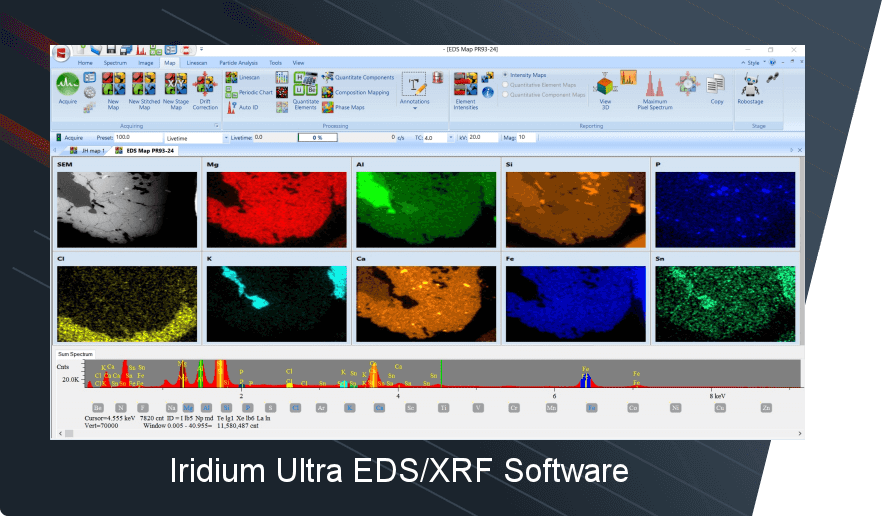Elemental analysis, the study of the elemental composition of materials, is a fundamental aspect of many scientific disciplines. Whether investigating geological specimens, biological tissues, or advanced materials, understanding the distribution and concentration of elements within a sample is crucial. Spatial resolution is a critical factor that significantly impacts the accuracy and detail of elemental analysis. In this blog post, we delve into the importance of spatial resolution in elemental analysis and explore how microX-ray fluorescence spectrometers (μXRF), like the Atlas series from IXRF Systems, enhance our understanding of diverse samples.
Unveiling Spatial Heterogeneity
Nature is often characterized by spatially heterogeneous samples, where different regions possess distinct elemental compositions. Researchers can unravel the intricate patterns and variations within a sample by employing high spatial resolution techniques. The Atlas series offers the smallest X-ray spot in the industry at 5 μm; this unique XRF microscope is optimized for analysis speed without compromising accuracy. This enables the identification of specific regions and unveils meaningful relationships between elemental distribution and sample structure or function.

Mapping Elemental Distributions
Spatially resolved elemental mapping provides valuable insights into the distribution and concentration of elements across a sample. High-resolution techniques allow for the generation of detailed elemental maps, revealing local variations, trace elements, and elemental interactions. This information aids in understanding biological processes, material properties, and environmental studies, paving the way for targeted investigations and informed decision-making.
Microanalysis of Subtle Features
Many samples exhibit small features of interest, such as nanoparticles, microstructures, or localized defects. High spatial resolution techniques are essential for characterizing the elemental composition, phase identification, and elemental quantification at a localized level. By zooming in on these features, researchers gain a deeper understanding of their elemental makeup and its implications on the overall sample behavior.

Quad Form Package (QFP): 2D elemental map overlaying silver & gold at 5µm resolution.
Accurate Elemental Quantification
Precise elemental quantification is essential for comprehensively understanding a sample’s composition. High spatial resolution minimizes interference from neighboring elements, leading to accurate and reliable elemental analysis. This becomes particularly important when analyzing trace elements or quantifying minor components within complex matrices. Researchers can achieve more precise measurements by improving spatial resolution, providing a solid foundation for in-depth elemental investigations.
Enhanced Imaging and Visualization
High spatial resolution significantly enhances the quality of elemental imaging and visualization. Fine details, sharp boundaries, and intricate structures can be captured, facilitating clear and informative visual representations of elemental distributions within a sample. These visually appealing representations aid in data interpretation, enable effective communication of research findings and support the development of scientific hypotheses.
Spatial resolution is pivotal in elemental analysis, enabling researchers to investigate samples with unprecedented detail and accuracy. From uncovering spatial heterogeneity to mapping elemental distributions, high spatial resolution techniques empower scientists to gain deeper insights into the elemental composition and its implications in various scientific and technological fields. By pushing the boundaries of spatial resolution, we pave the way for groundbreaking discoveries and advancements in elemental analysis.
Are you passionate about the intricacies of material composition? Want to understand the elemental backbone of scientific specimens? From geological wonders to biological intricacies, unveil the elemental secrets that shape our world.
Don’t just stay on the surface; go beyond the seen. Connect with our specialists, utilize our advanced tools, and let’s explore the hidden elemental tales together!
Don’t miss out on important news and updates from IXRF Systems – sign up for our newsletter today!


